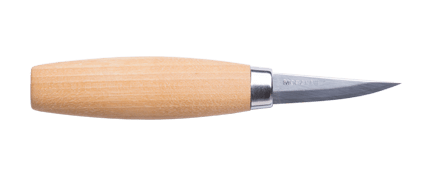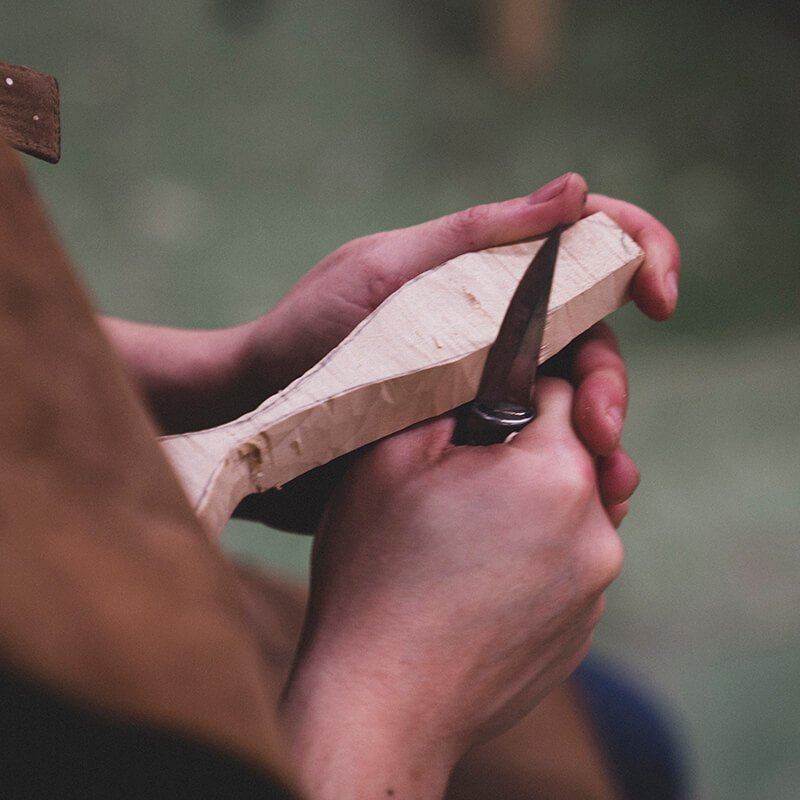The straight knife is the main tool for Spoon Carving.
Once we have removed as much wood as possible using the axe, we move on to the straight knife.
The straight knife is also knows as Sloyd (Slöjd) knife. This term means craft or handwork in Swedish and comes from a movement in the Scandinavian education system from the end of the XIX century which promoted hand work as an integral part of education from a your age. This system is still active in schools of Scandinavian countries.
The main tool of the movement is the knife, the Sloyd Knife. A small handled knife with a symetric bevel cutting edge. The blade is usually between 5cm and 12cm long.

The most important thing to remember when using a straight knife is making restricted movements.
Watch in the next video how the cutting motions are always supported or restricted with the hands or limited by the pivoting action made with the wrist. But they are never free range movements.
Free movements are those which are limited only by our reflexes, but our reflexes are never fast enough. Also they require twice the effort because we need force to make the cut and to stop the action.
Using restricted movements we can make safer and more efficient cuts.
Remember we must always read the grain to determine the direction of the cuts. Read more about this in: Follow the grain: Cutting direction
Let’s see an example in this next video by Nathan Bour:
For beginners but also for professionals, Morakniv is a decent brand of knives to own. You can find them in two sizes:
- Morakniv 120 (55mm blade)
- Morakniv 106 (82mm blade)
You can also find all sorts of hand forged knifes but the prices range higher than 150€ like the well known:
If you don’t have access to a good knife store, you can begin to practice with a well sharpened pocket knife.
These are the most common techniques for the straight knife:
We can fix our support hand and push the knife or fix the hand that holds the knife and pull on the wood. This technique is used only when we shave along the grain.
The back of the knife is supported by our thumb that pushes to make the cut in a very controlled way.
The lower back of the knife is supported by our thumb and with a closing motion of our forearms we pivot the knife to make the cut.

